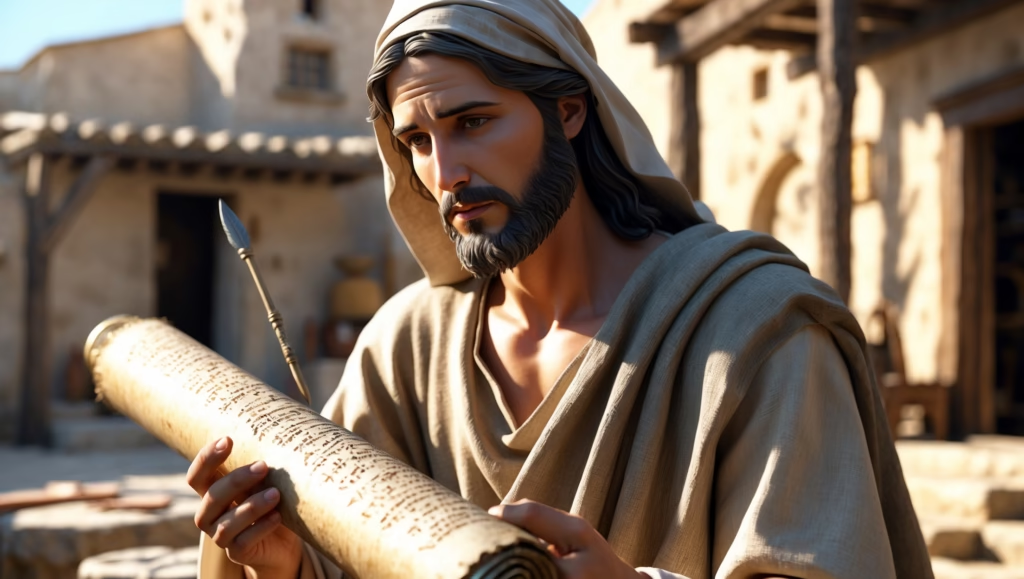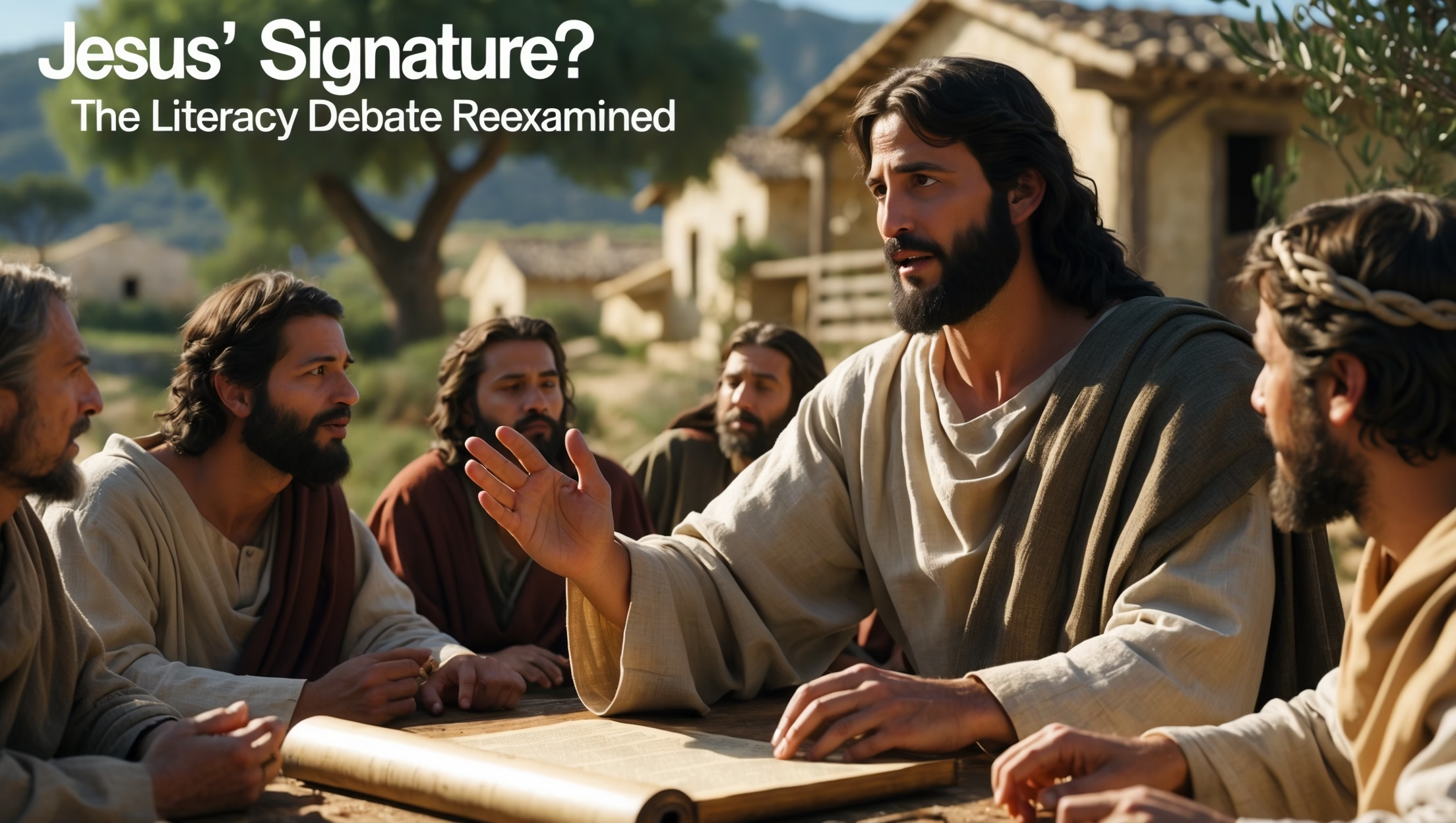Could the Messiah Read and Write?
Jesus is most often remembered for His teachings, parables, and miracles, but one recurring question fascinates scholars and believers alike: was He literate? The Gospels provide tantalizing but sometimes contradictory hints. While some passages suggest literacy, others emphasize His humble, “uneducated” origins. Understanding Jesus’ literacy is more than an academic exercise—it sheds light on His methods of communication, His engagement with culture, and the ways His ministry could reach both rural Galileans and urban audiences.
The debate also touches on broader questions about literacy in first-century Palestine, the oral culture of Jewish communities, and how sacred texts were transmitted. Recent archaeological discoveries and contextual studies offer fresh perspectives on this enduring question.

Evidence for Literacy
Several indicators suggest that Jesus could read, and possibly write:
- Proximity to Sepphoris
Sepphoris, a Hellenistic city just four miles from Nazareth, was a bustling urban center with administrative, commercial, and cultural institutions. Exposure to a literate environment could have provided Jesus with access to reading and writing practices. - Synagogue Reading Practices
Luke 4:16–20 records Jesus reading from the scroll of Isaiah in the synagogue. Jewish tradition required synagogue leaders or teachers to read and interpret Scripture publicly. While some argue He could have had an assistant read for Him, the text implies He personally read and understood the passage, suggesting literacy. - Roman Administrative Requirements
Living under Roman occupation, even simple economic transactions—such as taxation or land dealings—often required rudimentary record-keeping skills. As a tekton (craftsman), Jesus may have needed to read or interpret basic documents, further supporting the possibility of literacy.
Evidence Against Literacy
Despite these indicators, some passages question whether Jesus could read or write in the conventional sense:
- “Uneducated and Unlettered”
Acts 4:13 refers to Peter and John as “uneducated and ordinary men,” which some scholars extend contextually to Jesus. This may emphasize their social and formal education status rather than absolute illiteracy. - Oral Culture Dominance
First-century Galilee was largely oral. Wisdom, law, and teachings were often transmitted orally, and many rabbis taught without formal literacy. Oral storytelling, memorization, and recitation were highly developed, reducing the necessity of widespread literacy.
The “Writing in Dust” Incident (John 8:6)
The episode where Jesus “writes in the dust” when confronted with the woman accused of adultery has sparked modern scholarly interest. Some interpretations suggest that Jesus could write, possibly in Greek or Aramaic, though the text does not specify what He wrote.
Recent studies of 1st-century dust-writing techniques using styluses on sandy surfaces indicate that brief inscriptions or shorthand messages were possible, supporting the notion that Jesus could manipulate writing tools if He chose to. This aligns with the broader context of His practical, hands-on teaching methods.
New Archaeological Discoveries
Recent findings reinforce the debate:
- Wax Tablets Near Galilee
Excavations near Galilee uncovered 1st-century wax tablets used for temporary writing. These would have allowed students or teachers to draft notes, do arithmetic, or practice literacy skills—tools Jesus could have accessed during His formative years. - Script Analysis
Analysis of surviving inscriptions suggests bilingual literacy was common in some regions, particularly Greek and Aramaic, enabling communication across cultural and linguistic lines.
Theological and Cultural Implications
The question of Jesus’ literacy carries implications beyond academics:
- Qur’anic vs. Biblical Accounts
Islamic tradition often emphasizes the Prophet Jesus (Isa) as unlettered, highlighting divine inspiration over human education. The biblical evidence offers a more nuanced view, suggesting functional literacy in select contexts. - Modern Global Literacy Ministries
Understanding the potential literacy of Jesus informs contemporary faith-based literacy initiatives. By promoting reading and writing skills as part of discipleship or community development, modern ministries echo the Messiah’s engagement with knowledge and education. - Oral vs. Written Teaching
Even if Jesus were literate, His reliance on oral storytelling underscores the primacy of narrative, parable, and memory in transmitting truth—lessons that remain relevant for educators and communicators today.
Key Insight: Literacy as a Tool, Not a Requirement
Whether Jesus wrote in dust, read from scrolls, or relied on oral transmission, His ministry demonstrates that literacy was a tool rather than a prerequisite for influence. His ability to communicate, teach, and transform lives transcended technical reading and writing skills, emphasizing relational, cognitive, and spiritual literacy.
By reexamining His potential literacy, we gain deeper insight into His methods, the cultural milieu of 1st-century Galilee, and the ways faith communities can integrate practical knowledge with spiritual formation today.








